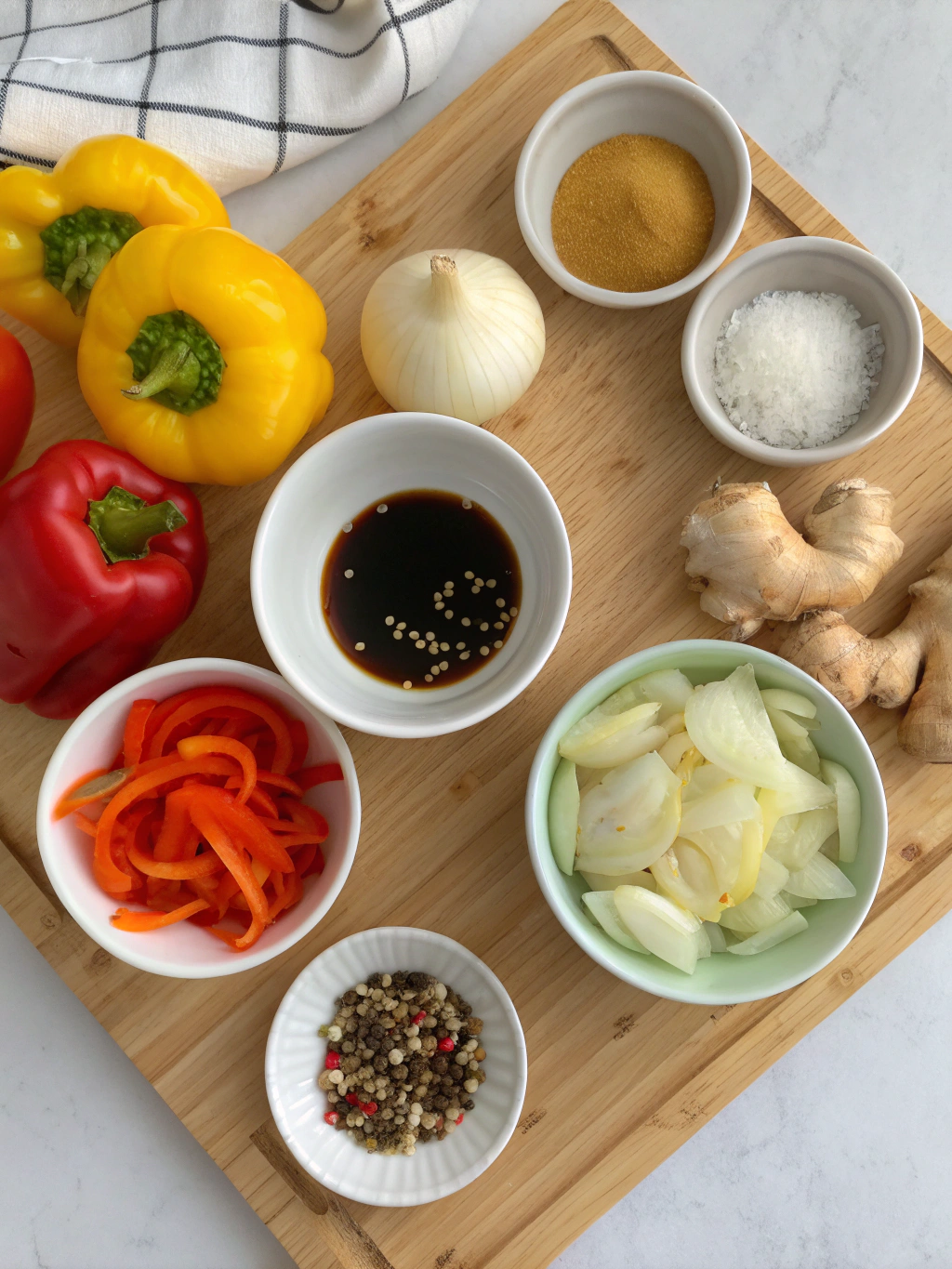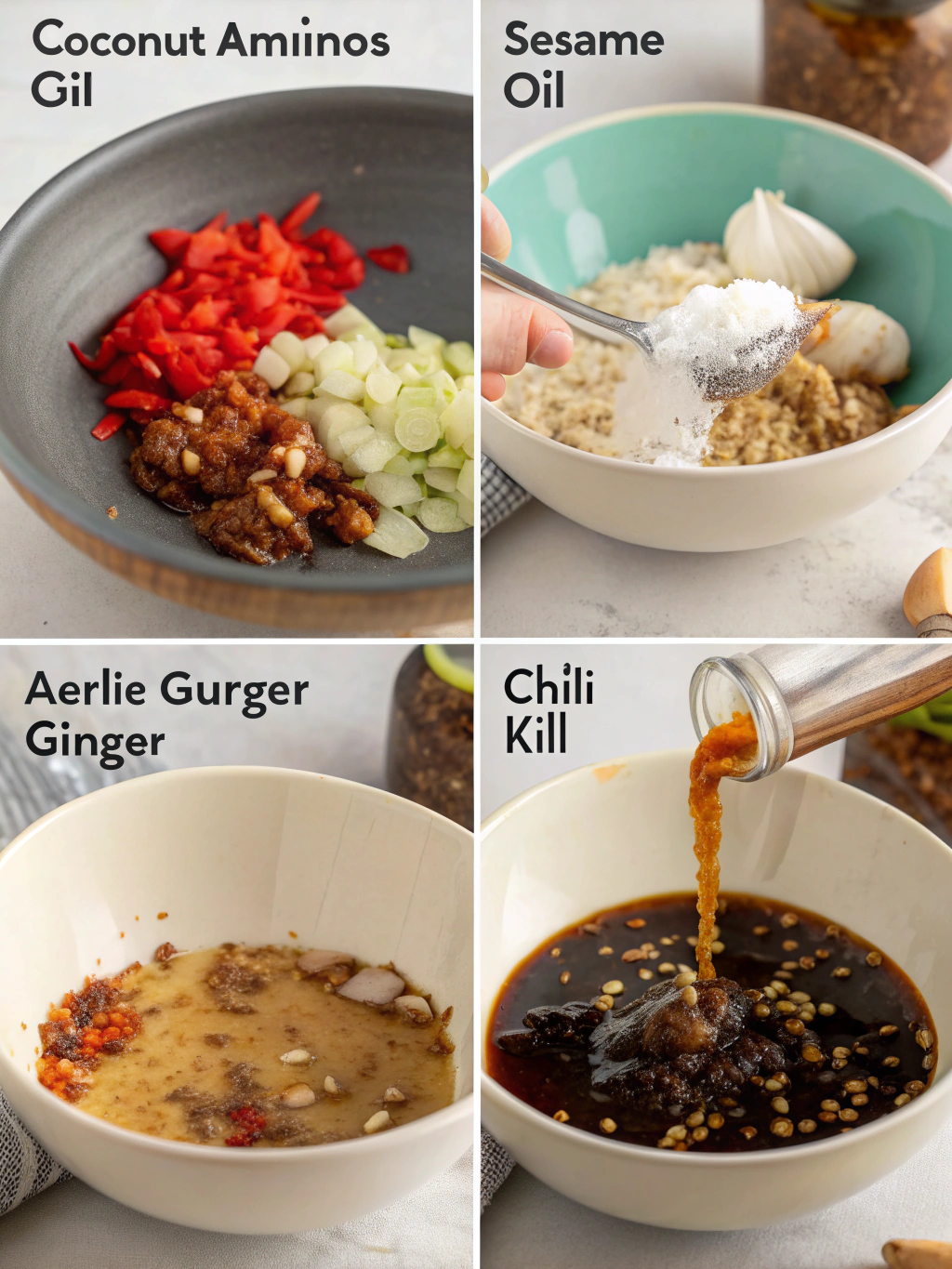Keto Stir Fry Sauce: The Perfect Low-Carb Asian Flavor Boost
Ever wondered how to create that authentic Asian stir-fry flavor without all the hidden sugars and carbs? Many store-bought sauces contain surprising amounts of sugar, making them off-limits for keto dieters. But what if you could enjoy that same umami-rich, tangy, and slightly sweet flavor profile while staying in ketosis?
Creating your own keto stir fry sauce is surprisingly simple and infinitely more satisfying than anything you’ll find in bottles. This versatile sauce transforms ordinary proteins and vegetables into extraordinary meals in minutes, all while keeping your carb count impressively low.
Ingredients List
The beauty of this keto stir fry sauce recipe lies in its simple yet powerful combination of ingredients. Each component adds depth without adding unnecessary carbs:
- ¼ cup coconut aminos (a keto-friendly soy sauce alternative)
- 2 tablespoons toasted sesame oil
- 1 tablespoon rice vinegar (unsweetened)
- 1 tablespoon fresh ginger, grated
- 2 cloves garlic, minced
- 1 tablespoon erythritol or monk fruit sweetener
- ½ teaspoon xanthan gum (for thickening)
- 1 teaspoon red pepper flakes (optional, for heat)
- 1 tablespoon sesame seeds
- 2 tablespoons water
Substitution options: If coconut aminos aren’t available, use tamari sauce (gluten-free soy sauce) but reduce the amount to 3 tablespoons as it’s saltier. Apple cider vinegar can replace rice vinegar in a pinch. For those who can’t find xanthan gum, a small amount of glucomannan powder works well.
Timing
Preparation time: 5 minutes
Cooking time: 2 minutes
Total time: 7 minutes
This keto stir fry sauce comes together in just 7 minutes total, which is about 80% faster than most homemade sauce recipes. The quick preparation time makes it perfect for busy weeknights when you need flavor fast without compromising your keto lifestyle.
Step-by-Step Instructions
Step 1: Prepare Your Aromatics
Finely mince the garlic cloves and grate the fresh ginger. For maximum flavor extraction, use a microplane grater for the ginger to release all its aromatic oils. The finer the mince on your garlic, the more evenly its flavor will distribute throughout your sauce.
Step 2: Combine Liquid Ingredients
In a small bowl, whisk together the coconut aminos, sesame oil, rice vinegar, and water until well combined. The combination of these liquids creates the umami-rich base that gives Asian stir fries their distinctive flavor profile without added sugars.
Step 3: Add Sweetener and Spices
Whisk in your erythritol or monk fruit sweetener along with the red pepper flakes (if using). Unlike traditional stir fry sauces that rely on brown sugar or honey, these natural keto-friendly sweeteners provide the subtle sweetness without the carb impact.
Step 4: Incorporate Aromatics
Add the minced garlic and grated ginger to the liquid mixture. Stir well to ensure even distribution. These aromatics infuse the sauce with authentic Asian flavors that make the final dish taste like it came from your favorite restaurant.
Step 5: Thicken the Sauce
Sprinkle the xanthan gum over the surface of the liquid while whisking continuously to prevent clumping. This crucial step replaces the cornstarch used in traditional recipes, providing that perfect clingy consistency without the carbs.
Step 6: Heat and Activate (Optional)
For a more developed flavor and thicker consistency, transfer the mixture to a small saucepan and heat over medium-low heat for 1-2 minutes, stirring constantly. The heat activates the xanthan gum and melds the flavors together beautifully.
Step 7: Finish and Store
Remove from heat and stir in the sesame seeds. Allow the sauce to cool completely before transferring to an airtight container if not using immediately. The flavors will continue to develop as it sits, making this even better when prepared a few hours ahead.
Nutritional Information
This keto stir fry sauce recipe yields approximately 6 tablespoons of sauce, with each tablespoon containing:
- Calories: 45
- Total Fat: 4.5g
- Saturated Fat: 0.7g
- Cholesterol: 0mg
- Sodium: 220mg
- Total Carbohydrates: 1.2g
- Dietary Fiber: 0.3g
- Net Carbs: 0.9g
- Sugars: 0.2g
- Protein: 0.5g
With less than 1g of net carbs per tablespoon, this sauce fits perfectly into a ketogenic lifestyle. Compare this to store-bought versions that often contain 5-7g of carbs per tablespoon, primarily from added sugars and modified starches.
Healthier Alternatives for the Recipe
While this recipe is already keto-optimized, there are ways to tailor it to specific health goals:
- Lower sodium version: Reduce the coconut aminos to 3 tablespoons and add an extra tablespoon of water.
- AIP-friendly adaptation: Omit the red pepper flakes and use apple cider vinegar instead of rice vinegar.
- Boosted nutrition: Add 1 teaspoon of MCT oil for extra healthy fats that support ketosis.
- Gut-friendly option: Replace xanthan gum with 1 tablespoon of bone broth collagen powder for thickening with added gut-healing benefits.
Serving Suggestions
This versatile sauce elevates numerous keto-friendly dishes:
- Drizzle over cauliflower rice and top with grilled chicken for a quick keto bowl.
- Use as a marinade for beef, chicken, or pork before cooking (marinate for at least 30 minutes).
- Toss with zucchini noodles and shrimp for a low-carb “lo mein” alternative.
- Brush onto salmon fillets before baking for an Asian-inspired seafood dinner.
- Mix with mayonnaise (1:1 ratio) to create a creamy dipping sauce for keto-friendly egg rolls wrapped in cabbage leaves.
- Drizzle over a salad of mixed greens, avocado, and seared tuna for a satisfying lunch option.
Common Mistakes to Avoid
- Adding xanthan gum directly: Always sprinkle it slowly while whisking to prevent clumping. Dumping it in all at once creates unappetizing gel pockets in your sauce.
- Using regular soy sauce: Traditional soy sauce contains wheat and more carbs. Stick with coconut aminos or tamari for a truly keto-friendly result.
- Overheating the sauce: Excessive heat can break down the delicate flavors of sesame oil and cause the xanthan gum to lose its thickening properties.
- Using pre-ground ginger: The flavor difference between fresh and dried ginger is substantial. Fresh provides a brighter, more authentic taste profile.
- Skipping the sweetener: Even though it’s a small amount, that touch of sweetness balances the savory and acidic components, creating a more authentic Asian flavor profile.
Storing Tips for the Recipe
This keto-friendly stir fry sauce keeps remarkably well when stored properly:
- Refrigerate in an airtight glass container for up to 2 weeks. The flavors actually improve after 24 hours as they meld together.
- If the sauce thickens too much during storage, simply whisk in a teaspoon of warm water before using.
- For longer storage, freeze in ice cube trays for convenient single-serving portions that last up to 3 months.
- Always use clean utensils when dipping into the sauce to prevent contamination and extend shelf life.
- The sauce may separate slightly during storage—this is normal. A quick whisk or shake will recombine the ingredients.
Conclusion
Creating your own keto stir fry sauce opens up a world of flavor possibilities while keeping your carb count firmly in check. With just 7 minutes of preparation time and ingredients you likely already have in your keto pantry, there’s no reason to compromise on taste or resort to store-bought options laden with hidden sugars.
Have you tried making this keto-friendly stir fry sauce? Share your favorite protein and vegetable combinations in the comments below! And if you’re looking for more keto sauce recipes to elevate your low-carb meals, be sure to check out our other sauce guides that make keto cooking both delicious and convenient.









